Potatoes are one of the best crops to grow in your garden. They’re versatile, easy to cook and thrive in most areas. However, if you want to have a huge potato yield, make sure you aren’t making any of these potato-growing mistakes.
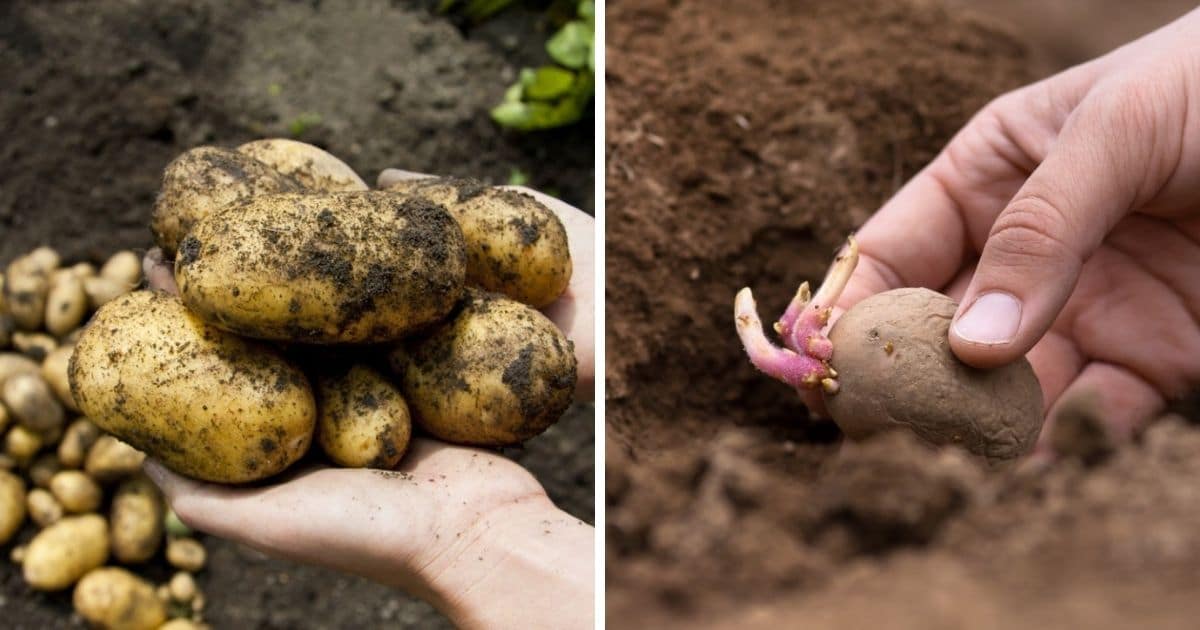
The first year I grew potatoes, I had no idea what I was doing. So, I built a box for my potatoes, planted them, and left them to grow.
No hilling. No fertilizing.
I planted them at the wrong time, and when I harvested (way too early), I found a small number of potatoes. It didn’t seem like it was worth the time, so I gave up growing potatoes. Later, I realized I made plenty of potato growing mistakes and became determined to learn how to grow a large potato harvest.
If you’re ready to stop buying potatoes and grow them in your garden, here are a few of the top potato growing mistakes you need to make sure you aren’t making.
Jump to:
- 14 Potato Growing Mistakes
- 1. Planting at the Wrong Time
- 2. Growing The Wrong Varieties for Your Growing Zone
- 3. Using Potato Seeds That Are Too Old
- 4. Using Store-Bought Potatoes to Grow
- 5. Not Curing Cut Potatoes
- 6. Planting Somewhere Without Good Drainage
- 7. Plants Don’t Receive Enough Light
- 8. Overcrowding Your Potato Plants
- 9. Not Hilling Your Potatoes
- 10. Watering Your Potato Plants Too Much
- 11. Fertilizing Too Much
- 12. Ignoring Pests and Diseases
- 13. Harvesting Potatoes Too Soon
- 14. Storing Your Harvested Potatoes Incorrectly
- Don’t Make These Mistakes
14 Potato Growing Mistakes
1. Planting at the Wrong Time
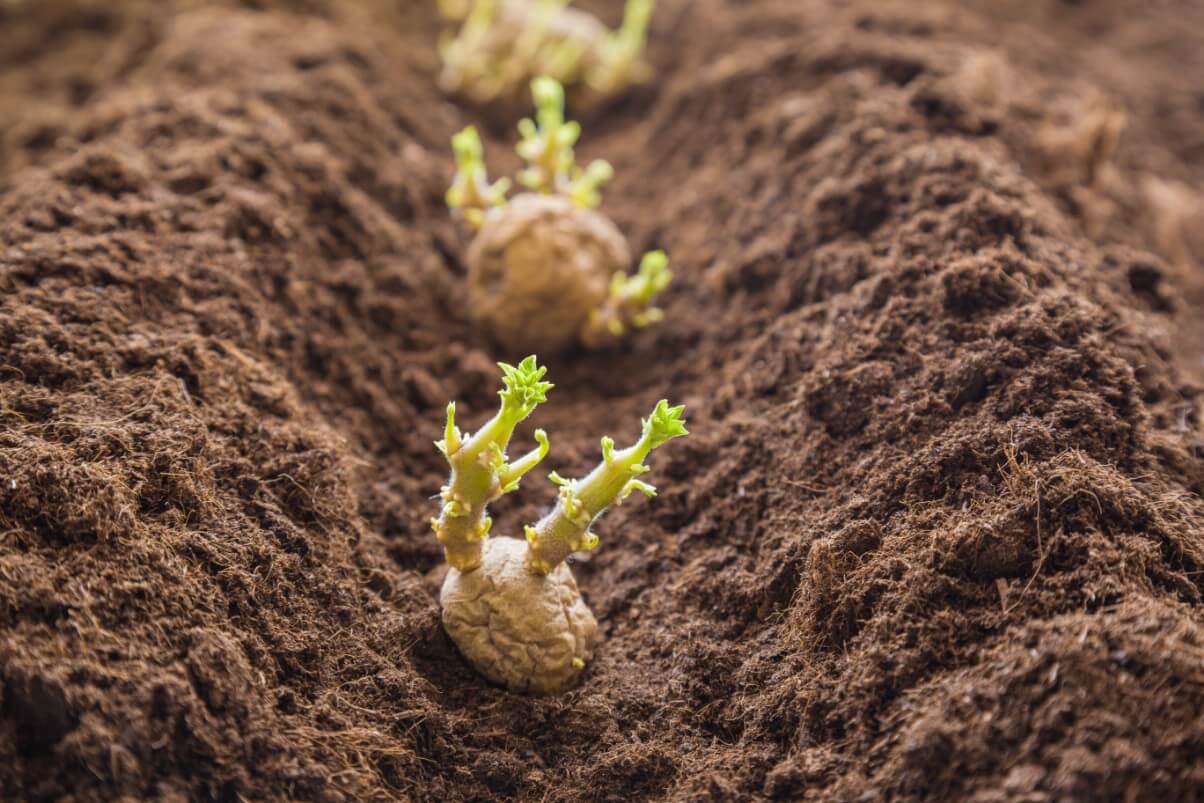
One of the most common potato growing mistakes that I’ve made several times is planting at the wrong time. It’s easy to plant potatoes too late or too early accidentally.
The best time to plant potatoes is when the daily low temperature is no lower than 45°F and a daily high temperature of at least 55°F. Potatoes will survive lower temperatures, but these temperatures lead to the best success.
Typically, gardeners plant potatoes three to four weeks before your final frost in your area. While these plants are hardy, if the temperatures are too cold, they won’t sprout. The same goes if the temperatures are too hot. You want the plants to be sprouted and growing before hot weather strikes.
2. Growing The Wrong Varieties for Your Growing Zone
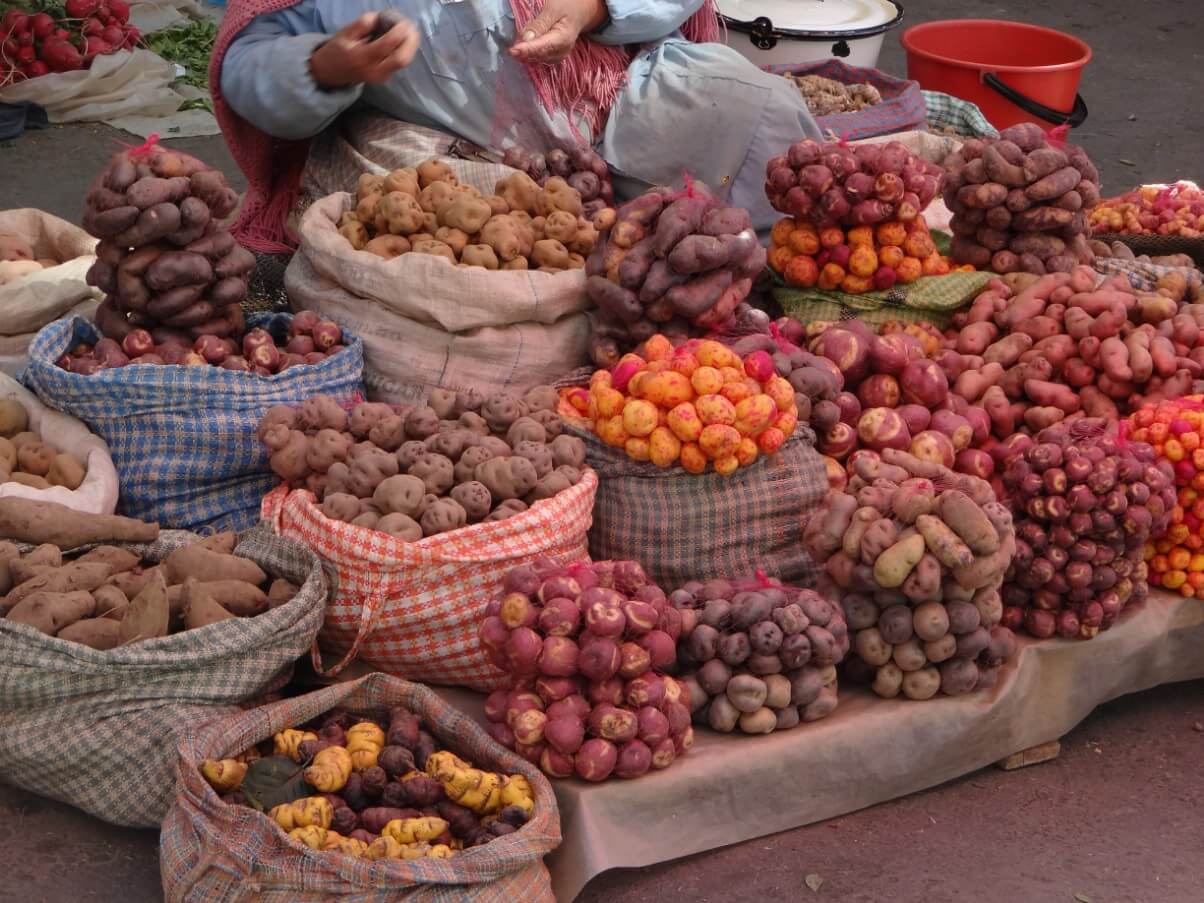
You have to pick the right potato variety for your growing zone. Potatoes come in three types: early, mid, and late season, and these are based on how long it takes for the plants to reach maturity and harvest.
If you pick a variety with a long growing season and have a short growing season, your plants won’t have enough frost-free days to reach maturity. On the other hand, gardeners with a long growing season can grow any potato that they want; they might have time for two plantings if they grow early potatoes that reach harvestable size within 70 days.
If you live somewhere with a short growing season of 100 days or less, I suggest only growing early to mid-season potatoes. Early potatoes take 60-70 days to reach maturity, mid-season requires 80 days, and late potatoes take 90-100 days to reach maturity.
3. Using Potato Seeds That Are Too Old
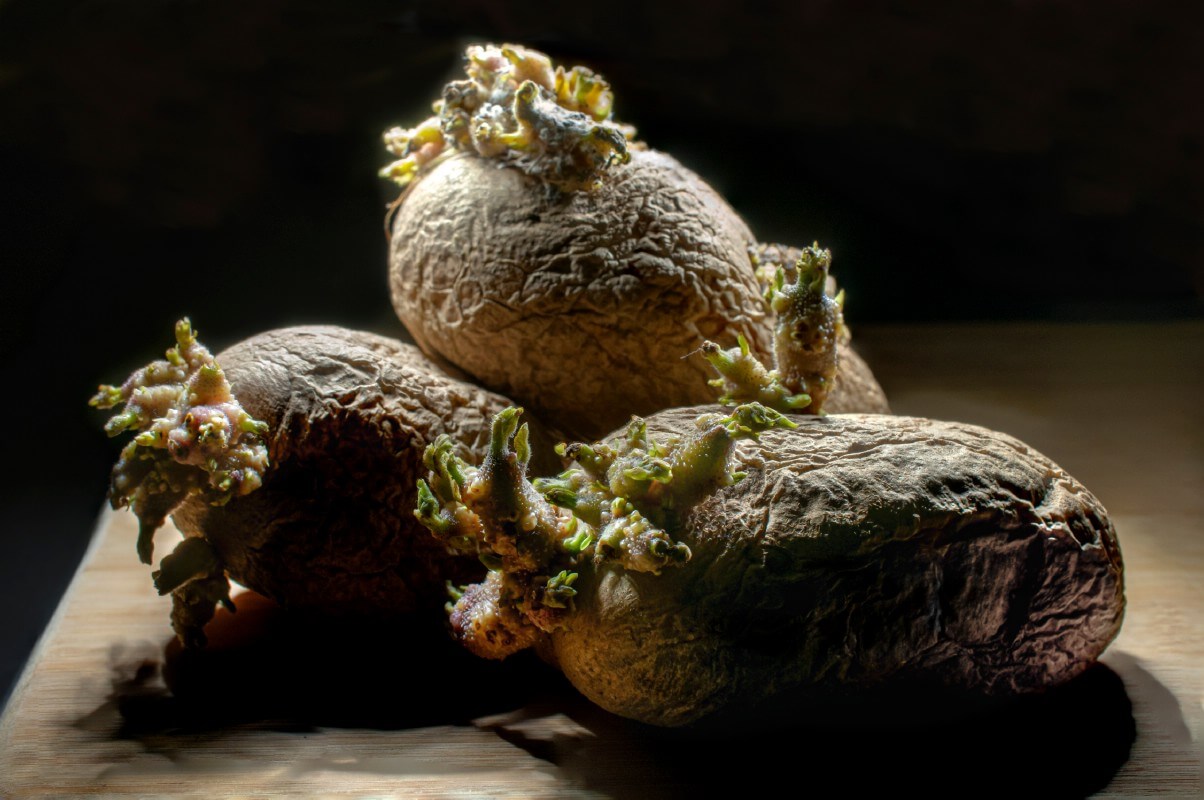
Are you tempted to use potato seeds from last year? I don’t recommend it!
Using old seed potatoes increases the likelihood that your plants won’t sprout, and they might carry diseases. The longest you want to store seed potatoes before planting is 200 days, but that varies based on the variety you grow.
So, if your seed potatoes are older than that, get some new ones and plant those.
4. Using Store-Bought Potatoes to Grow
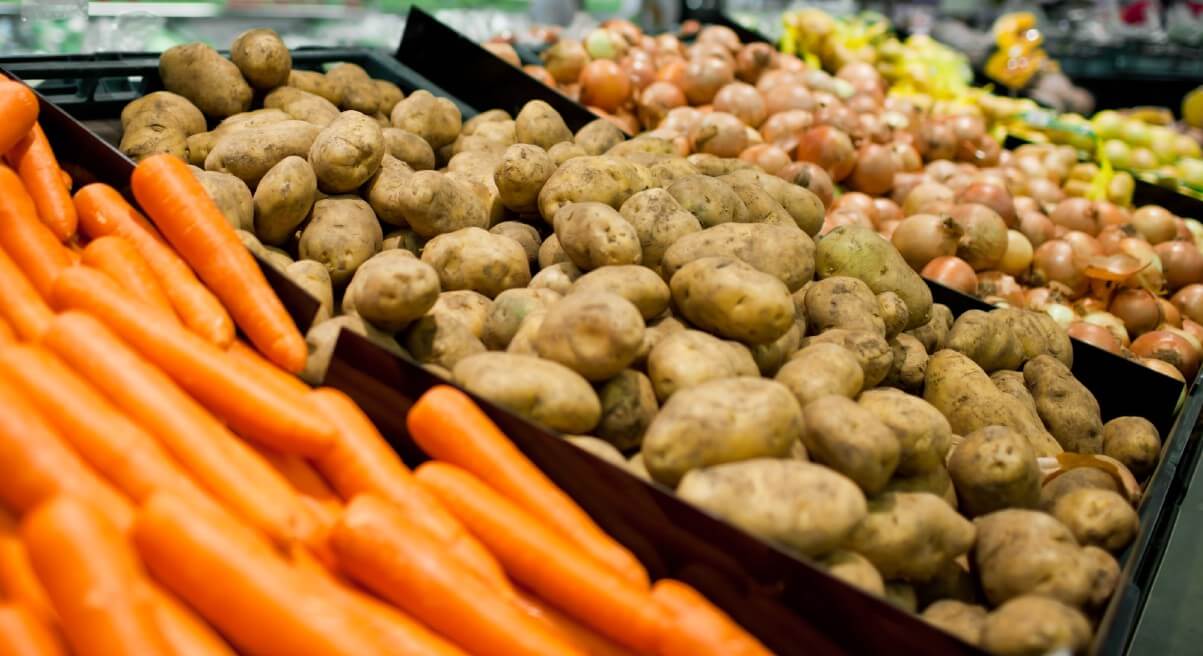
A potato is a potato, right? So, in theory, we should be able to use the potatoes at the store to grow potatoes in our backyard.
While it’s possible that you can do it, it’s not a foolproof plan. Purchasing seed potatoes is the way to go because store-bought potatoes are typically sprayed with chemicals to prevent or slow their sprouting.
Think about it; in the store, potatoes aren’t kept in ideal conditions. They’re in a brightly lit, warm area when they need to be stored in a dark, cool environment. Store-bought potatoes typically won’t sprout in the ground, wasting your time.
Just go with seed potatoes!
5. Not Curing Cut Potatoes
When you plant potatoes, most people use seed potatoes, and some are pretty large. So, it’s normal to cut them into multiple pieces, so long as each slice has an eye, increasing the likelihood of producing a potato plant.
Cutting seed potatoes is fine; I do this all the time. However, it would be best if you cured the cut potatoes before planting. Leave them out somewhere to dry and cure for several days before planting in the ground. This prevents rotting that often happens if you don't cure potatoes.
6. Planting Somewhere Without Good Drainage
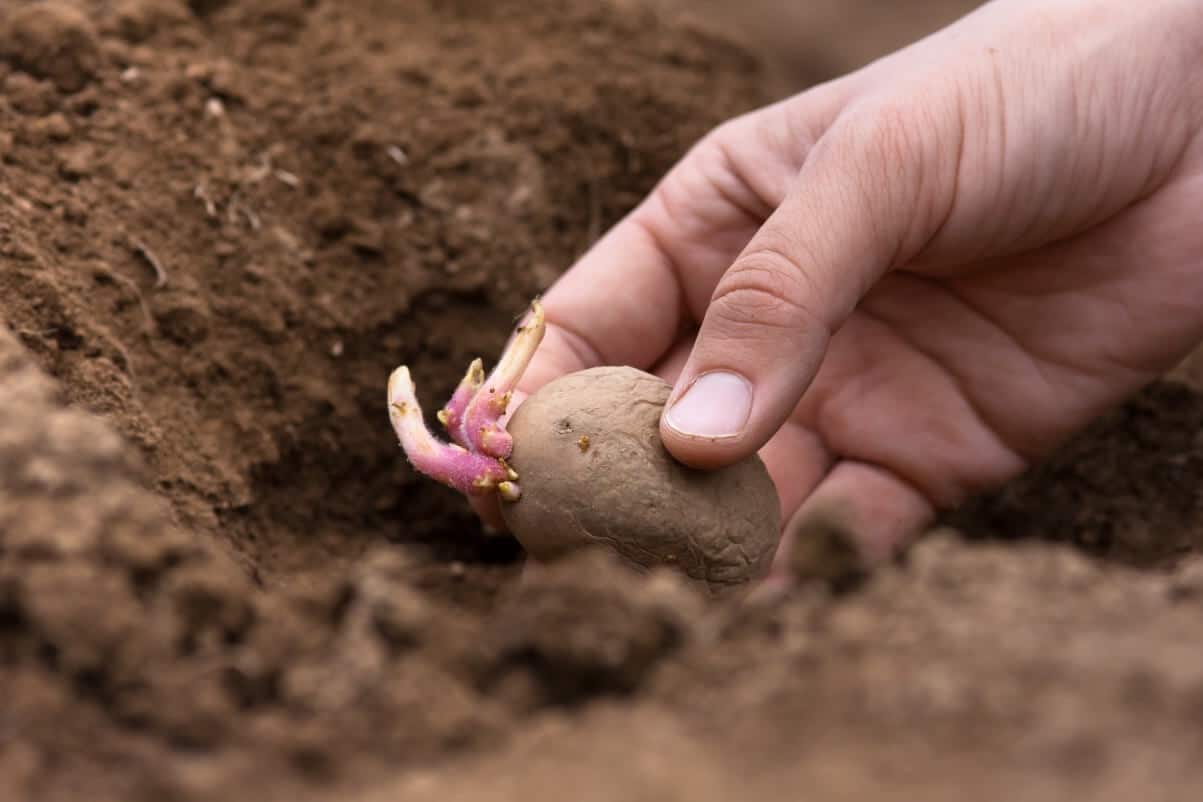
One of the biggest potato-growing mistakes is planting somewhere with poor drainage. Too much moisture in the ground will cause your potato plants to rot before sprouting.
If the potato seedlings sprout but face soggy ground all the time, it will lead to rot and reduce or stop a harvest entirely. As a result, you might end up with fewer potatoes, or the ones you harvest might be too small or rotted.
7. Plants Don’t Receive Enough Light
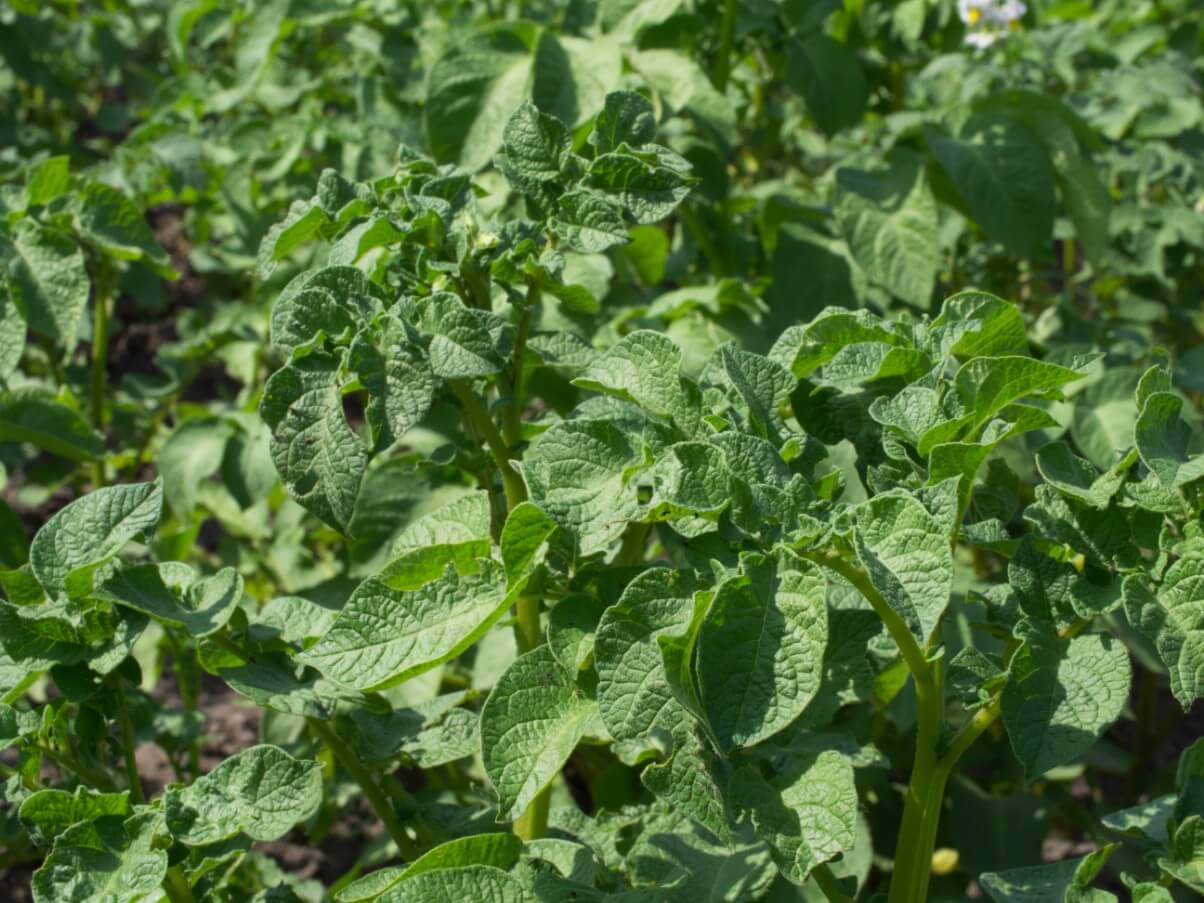
All plants, including potatoes, have specific light requirements for growth. Potatoes need to be planted in full sunlight, receiving six to eight hours daily.
Like any other garden plant, if you plant potatoes where they don’t receive enough light, they won’t grow. Chances are your potato plant will grow, but it won’t have enough energy to send down to the roots to produce large potatoes.
That’s a bummer, so make sure you check out the area you want for potatoes to ensure it receives enough light throughout the summer.
8. Overcrowding Your Potato Plants
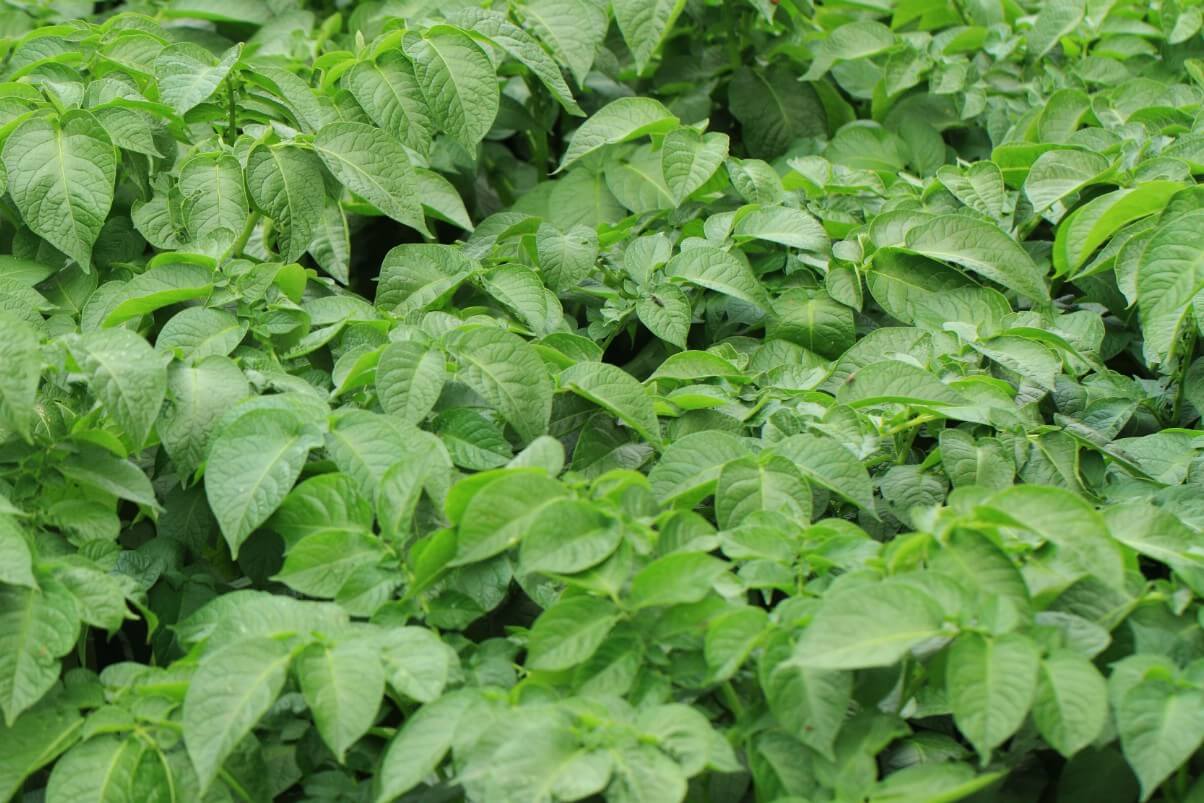
You might think that planting more seed potatoes will result in a larger harvest, but that’s not always the truth. The amount of soil you provide determines your harvest size; overcrowding your potato plants is one of the most common potato growing mistakes. However, when you do this, you significantly limit your yield.
Overcrowding only gives your potato plants so far to space out and grow. Remember, these are root crops, and the roots need to spread out and have space to grow and produce more potatoes. If they’re spaced too close together, that’s not going to happen.
Another common problem that comes from overcrowding potato plants is fungal diseases. Overcrowding leads to poor air circulation; you might end up with more diseases and pest problems.
That’s a no-go!
9. Not Hilling Your Potatoes
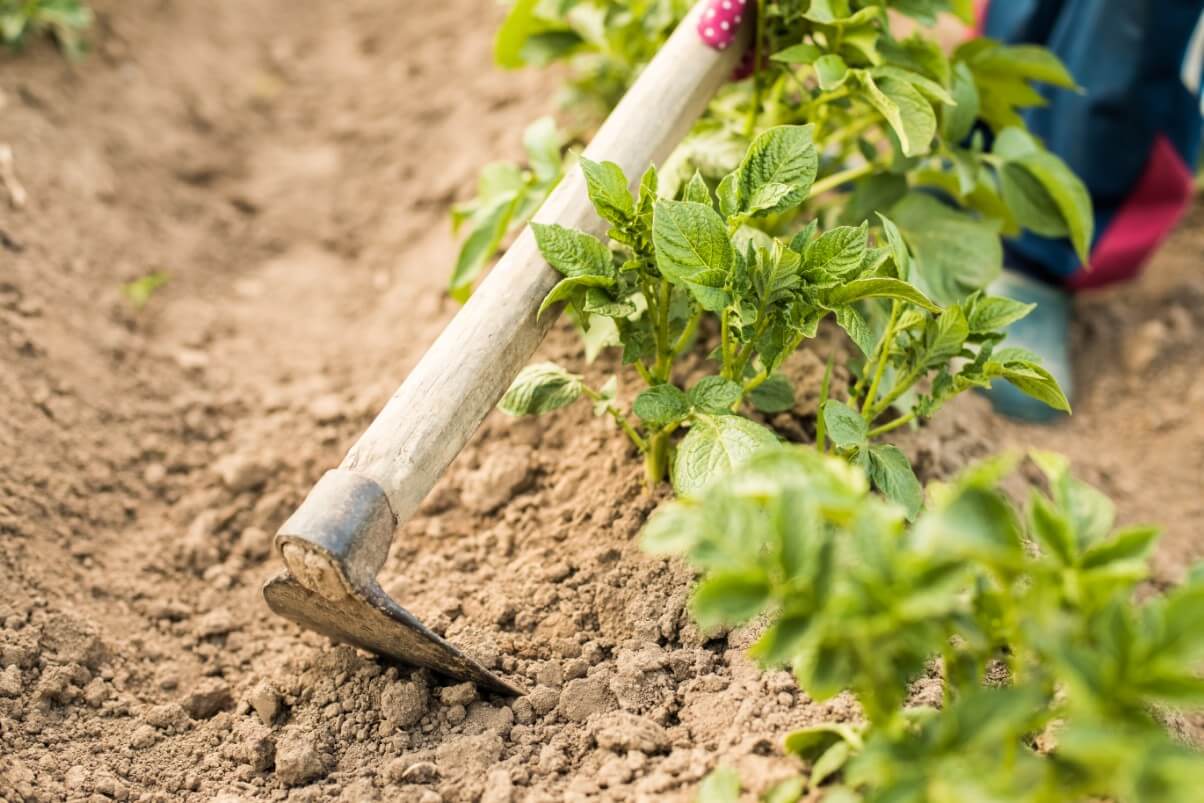
Another potato growing mistake I made when I first planted potatoes in my garden was not hilling the potato plants. At first, I had no idea what hilling meant and found the process confusing.
Hilling potatoes means that you rake the soil up and around the base of your potato plant. This supports the stems and keeps the potatoes covered. Potato plants need to be hilled to grow properly.
Typically, potato plants need to be hilled on a weekly or biweekly basis. It’s important because it encourages more potato growth and stops the sunlight from reaching your potato crop. Potatoes will turn green if exposed to sunlight while growing in the ground.
10. Watering Your Potato Plants Too Much
All plants need ample water, but overwatering your potato plants is a mistake you don’t want to make. Potato plants need one to two inches of water per week, but you have to be thoughtful about how you water and how often you give the plants water.
Gardeners shouldn’t water too much after planting because it causes the tubers to become misshapen. Likewise, if you don’t water enough when the potatoes are forming, you’ll end up with strangely shaped potatoes or small ones.
Plan to water your potato plants every four to five days deeply. When the tubers start to form, try watering every three days, but the soil needs time to drain and start to dry before watering again.
If you water too much, the tubers will rot in the ground.
When the foliage turns yellow and starts to die off, it’s time to stop watering your plants. This forces the potatoes to mature before harvesting. If you continue to water, the matured potatoes might rot in the ground.
11. Fertilizing Too Much
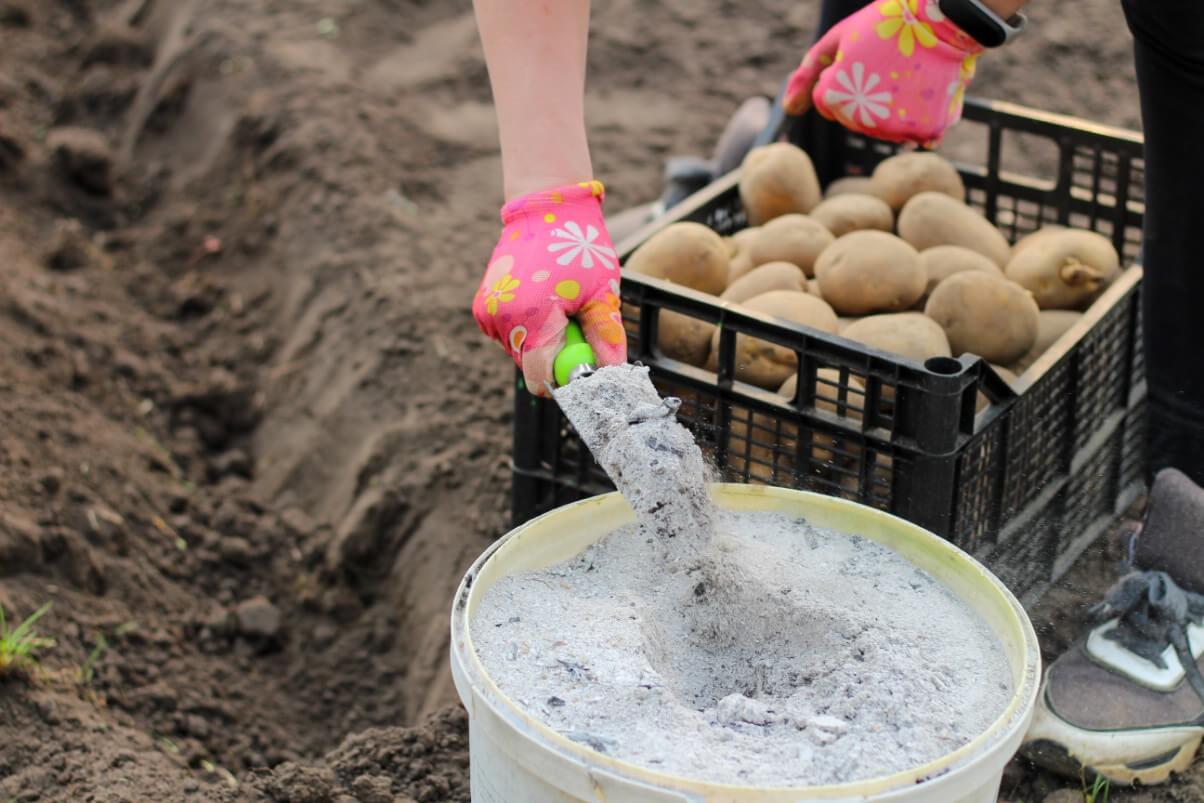
If you harvest your potatoes and they have a hollow center, it’s because they grew too much. One of the biggest culprits of this is fertilizing potatoes too much and too much water.
Now, we can’t control rain, so if you have a particularly rainy season, there is little that you can do to protect your plants, but you can control how much and how often you fertilize your plants.
Since potatoes are a root veggie, they prefer more phosphate and potassium when being fertilized. Pick an all-purpose fertilizer with the proper levels, such as a 5-10-10 or an 8-24-24. Too much nitrogen causes the plants to grow more foliage and stop producing and growing the tubers.
12. Ignoring Pests and Diseases
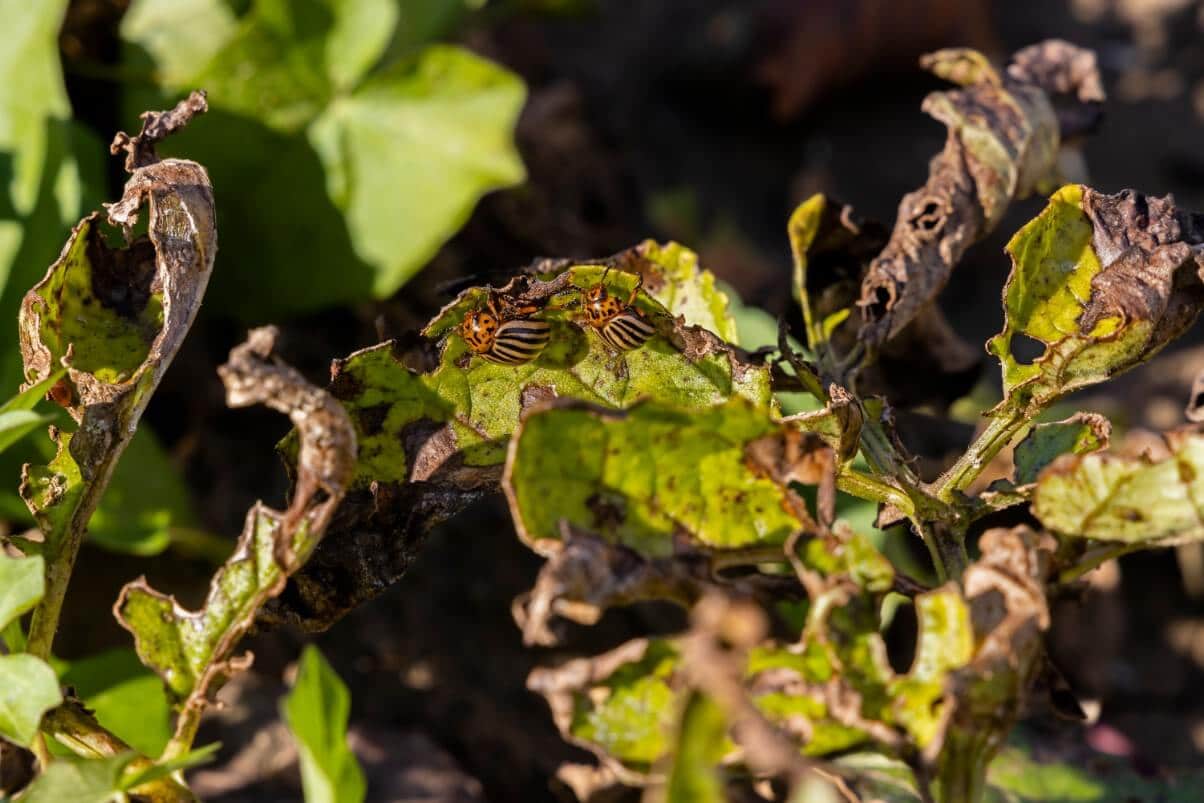
One of the most common potato growing mistakes is ignoring pests and diseases. It’s easy to focus on plants like zucchini and tomatoes when it comes to pests, but potatoes belong to the nightshade family along with tomatoes. As a result, they have a huge range of pests that might infect and kill your plants.
Potato plants have several common pest threats, such as potato beetles, aphids, flea beetles, spider mites, and leafhoppers. In most cases, organic methods control their populations, but you also can use insecticides to get rid of your potato pests.
13. Harvesting Potatoes Too Soon
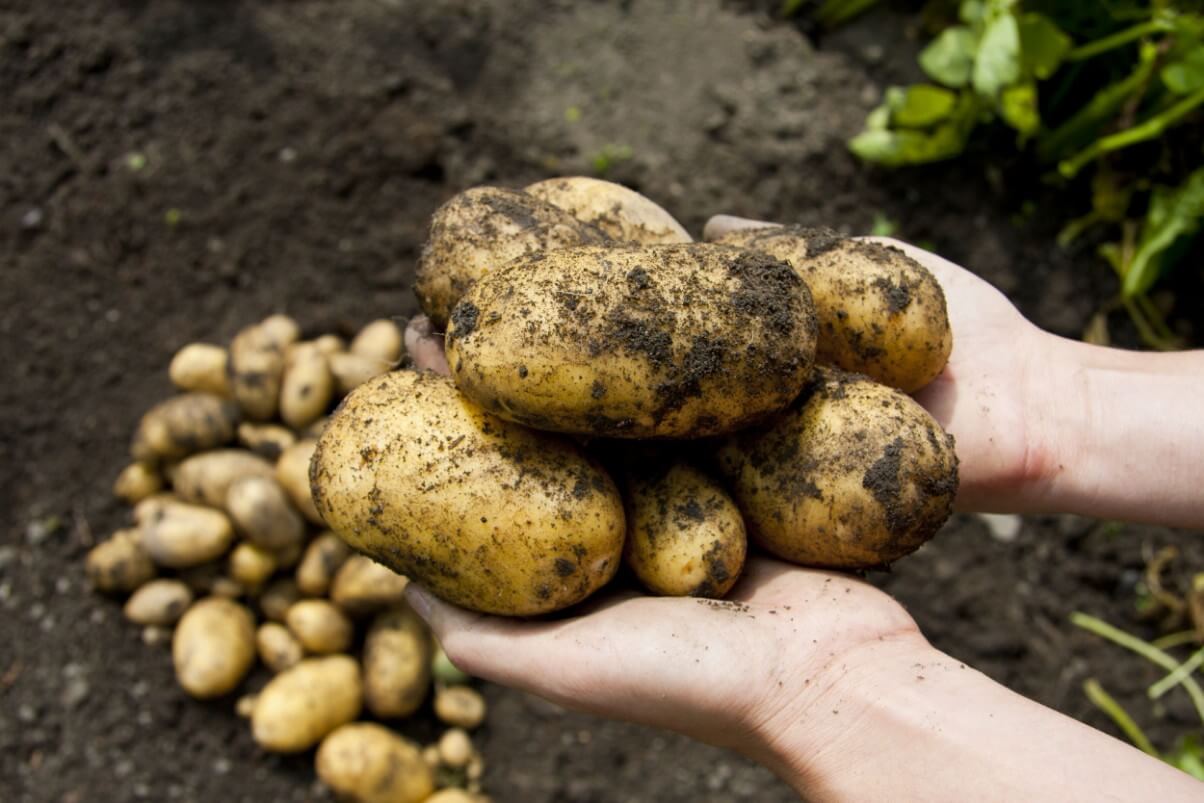
The potato growing mistake is the one that I make most often - harvesting potatoes too soon.
Figuring out when to harvest potatoes is tricky because, unlike tomatoes and peppers, you cannot see the crop above ground to know if it’s ready for harvesting. You feel excited and want to eat some homegrown potatoes, so you pull them out of the ground.
While you’ll have some potatoes, you’re cheating yourself out of a larger, more substantial harvest with bigger potatoes when you harvest too soon.
The best time to harvest potatoes is when the plants turn yellow and start to die back. This indicates that it’s time for you to dig them out of the ground. If the plant is still green and growing, it’s not time to harvest because the plant is still producing.
14. Storing Your Harvested Potatoes Incorrectly
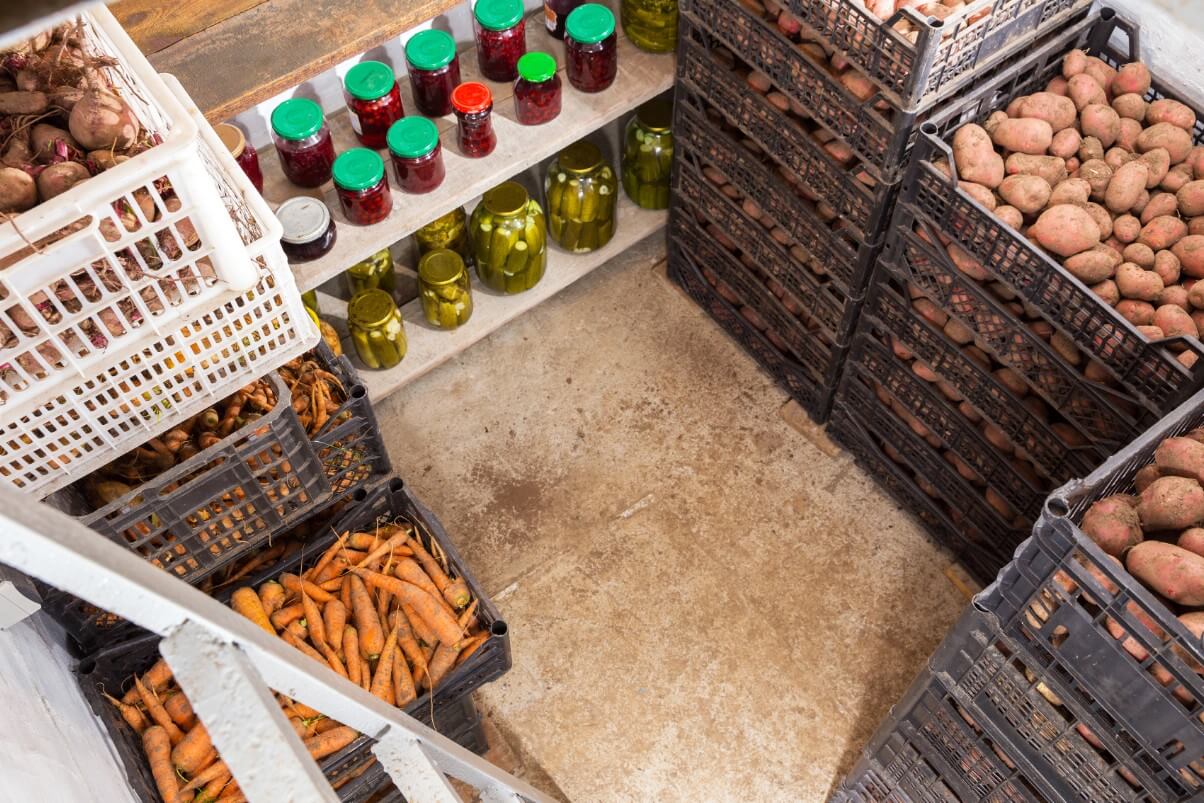
You spent months growing potatoes, so now, you have to store them properly, or all of your hard work goes down the drain.
Unless you grow a small number of potatoes, chances are you can’t use them up all at one time. So, you need to store them properly.
The first thing you have to do is cure your potatoes. This step is simple; spread your potatoes out on a screen and keep them in the sun for two days. This helps to allow excess moisture to evaporate before storage.
Potatoes need to be stored in a cool, dark location; a root cellar is optimal. Make sure the potatoes don’t touch each other because it leads to rotting. Most people stick the potatoes in bins of dirt or sawdust and store them.
That’s not your only option!
I love canning my potatoes in large chunks. I use canned potatoes for mashed potatoes and potato soup, but make sure you use a pressure canner. That’s the only safe way to can potatoes.
You also can freeze potatoes! They’re best frozen as homemade french fries; homemade is always better than store-bought!
Don’t Make These Mistakes
Potatoes are often listed as a beginner crop, and while they’re easy to grow, if you make any of these potato growing mistakes, your crop will be minimal. Avoiding all of these mistakes will start your potato crop off on the right foot.

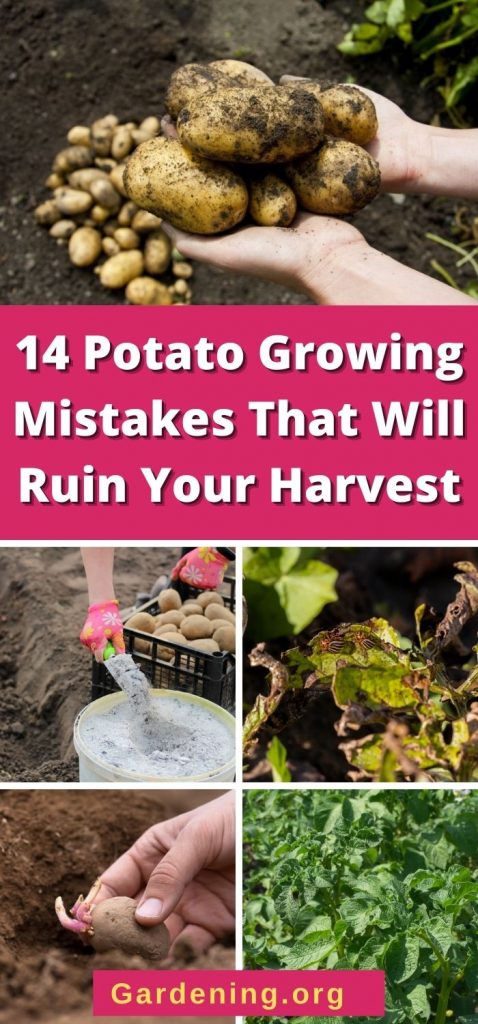
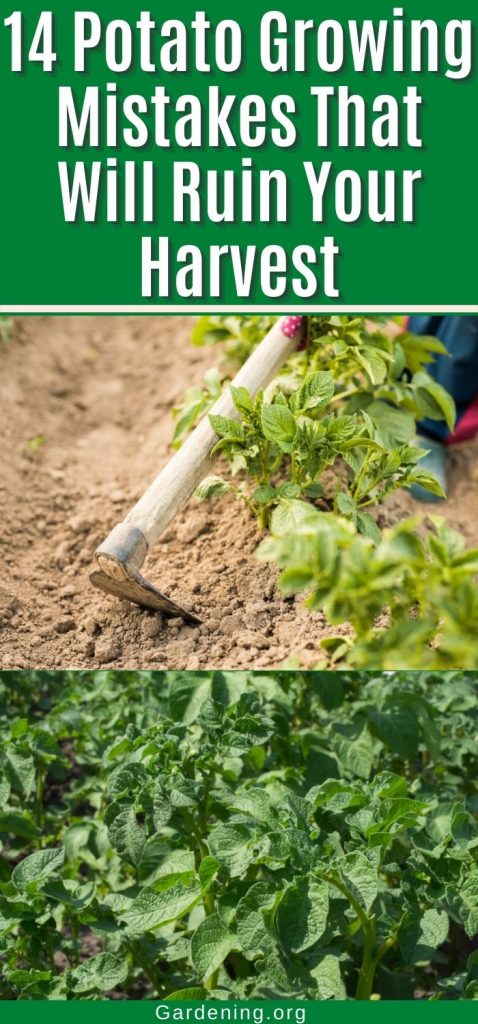
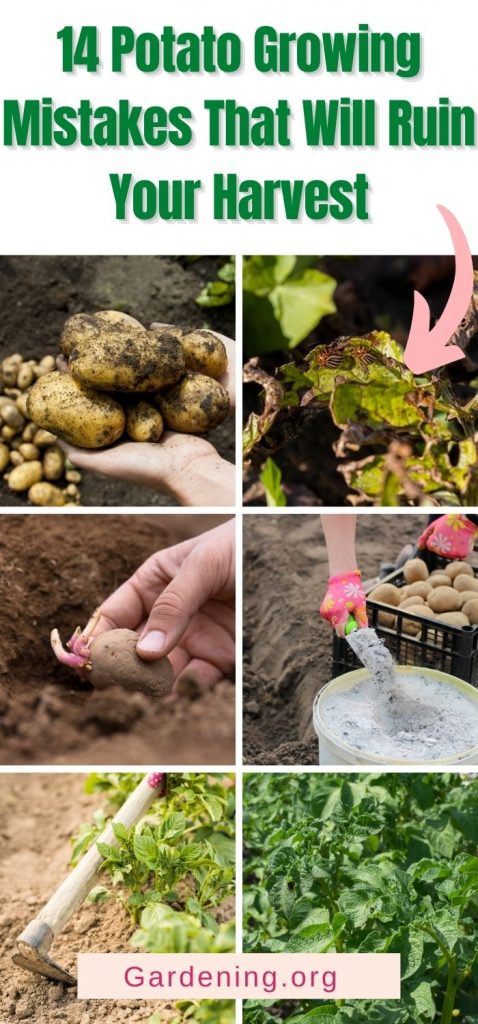
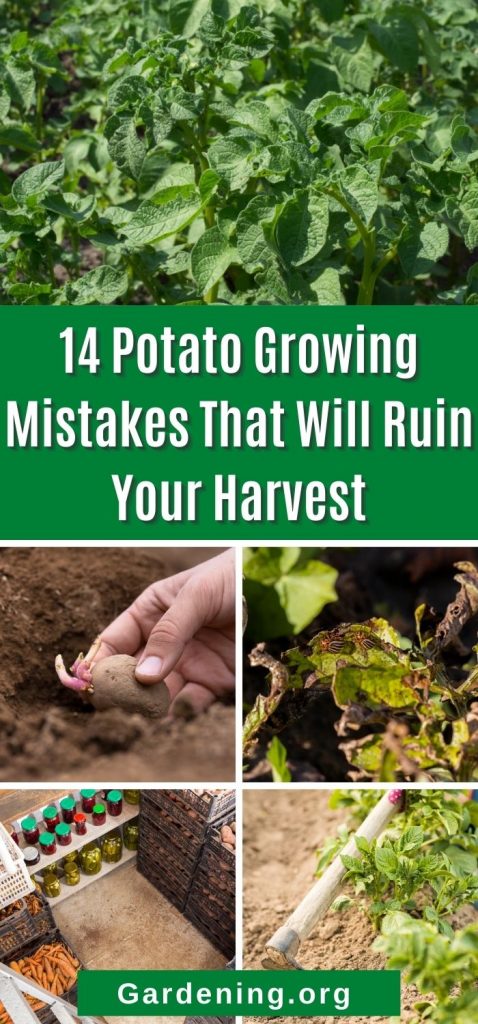




Leave a Reply